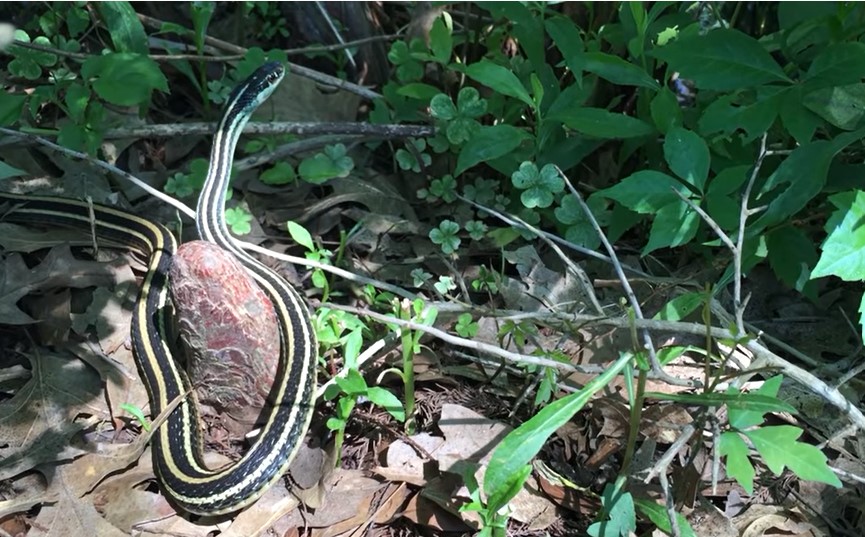
The Eastern Ribbon Snake (Thamnophis Sauritus) is named for its long narrow appearance which does put one in mind of a ribbon, and they can also vary greatly in length. There are large populations of these snakes to be found across much of the eastern side of the United States, and in the colder states they are also likely to hibernate until the spring. They are semi aquatic animals which will tend to be much more populous on flat areas near to a water source, and these snakes are fairly harmless, but they are likely to become distressed when they encounter people.
Appearance And Diet
As their name would suggest the Eastern Ribbon Snake is a long and thin snake which can be between sixteen to twenty-eight inches as an adult. The body is generally black in color with a yellow stripe running down the back of the snake and two more stripes running down each side of the snake's body. Although the body is black the underbelly is closer to the color of the yellow stripes. The head and the neck of the snake is in proportion with the rest of the body, and the top of the head will look a dark green in color.
One interesting aspect of the hunting preferences of the Eastern Ribbon Snake is that it won't eat warm blooded prey, and they will do much of their hunting in the water if possible. Animals such as salamanders, frogs, fish and insects are all potential prey for the snake, and will use their full range of senses in order to track their prey. They will usually hunt in the morning or the evening, and have been known to eat carrion where it is available.
Behavior And Habitat
This snake will usually look for areas with cover when it isn't hunting, and although this can mean an empty animal burrow in some cases, generally they will just hide themselves in leaf litter or other ground cover. When they do encounter humans and especially when they are held, they are likely to try and bite and will also thrash and wriggle wildly to try and escape. Like many other snakes the Eastern Ribbon Snake will also release a foul smelling musk which is very unpleasant, and it is also one of the species that can shed its tail to try and escape from the threat.
The large population of these snakes is spread across much of the eastern states, and can also be found in some areas of Canada too. They will generally be found near to water sources where they can use their natural preference for swimming and underwater hunting. They will prefer areas of sunlit vegetation where they can hide using their natural camouflage for protection.
Reproduction And Growth Cycle
The majority of the Eastern Ribbon Snakes will hibernate during the winter, and after awaking from hibernation they will usually begin mating in April and May. An interesting aspect of the mating rituals of this snake is that the male will insert a copulatory plug into the female once they have mated so that other males will not try to take the same female. The female will then give birth during August and September, and will have a litter of between five and sixteen young snakes which will look much like small adults when they emerge.
These young snakes will only be a few inches in length when they emerge, and will grow gradually for the first two or three years until they reach sexual maturity, which will be in the third year for most snakes. Although it is difficult to provide an exact lifespan for these snakes in the wild, they can commonly live between fifteen and twenty years in captivity.
Go back to the pestcontrolsnake.com home page.
Copyright 2021 - pestcontrolsnake.com
Nationwide Snake Control